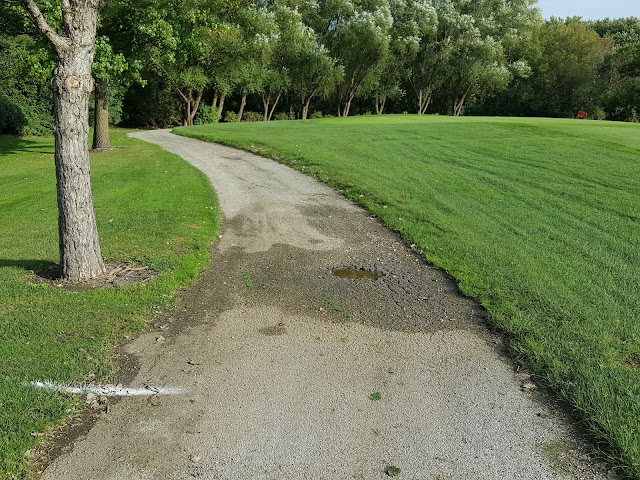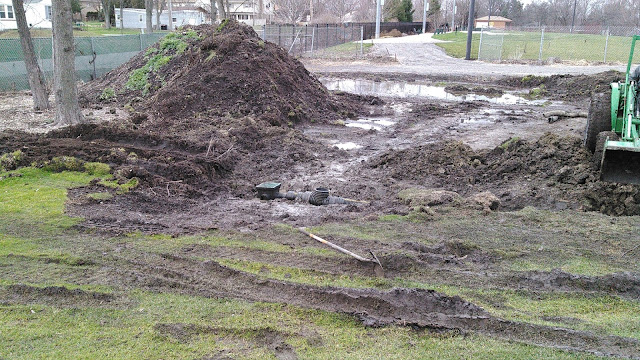The next step of our renovations around the driving range is nearly complete. Before the
Emerald Ash Borer, this area was packed with
buckthorn and ash trees. Removing the invasive species and dead ash trees has been a costly and time-consuming process. First, the buckthorn had to be removed to allow access to the fence and the ash trees. Second, the fence was cut and rolled up to allow the removal of the 75-foot-tall ash trees. Third, around 160 ash trees were removed around the range by the Village of Villa Park's tree crew. Fourth, the area around the
back tee on #7 had to be renovated to allow cart access, improve drainage, and repair damage from the tree removal. Fifth, the stumps were ground and leveled. During these steps, several improvements to drainage, grading, and turf were made. The sixth step is repairing the chain link fence that was rolled up to allow access to the trees. This is a tedious process that involves weaving the panels back together and stretching them down the line.
Below you can see Gary weaving one of the last panels together:
With the fence back together, we can start adding the finishing touches. Grass will be planted up to the fence on the golf course side. On the driving range side, a mix of narrow-growing shrubs and trees will be planted in the future. Very few species are suitable for this area because we do not want them to grow into the driving range net or hang out too far and block the tee on #7. We will also avoid planting a monoculture (meaning all one species of plant) to reduce large-scale losses to a species-specific pest in the future.
For reference, here is a photo of the area in 2013 as the ash trees were dying. This is after a lot of buchthorn removal had already taken place. The concrete in the foreground is a piece of curb removed from the fairway bunker on #6 while we were renovating the bunkers that year:
Here is the same area from another angle:
The area looks quite different now, but from the perspective of the game of golf it is arguably better as the branches do not knock down tee shots and less time is lost looking for lost balls. Also, the trees and buckthorn in the area required a lot of maintenance and trimming even before the trees died, and they were causing damage to the driving range net. While we would much rather have not had to remove the trees, we now have a fresh start in this area and can intentionally plan it to be more sustainable in the future.




























































